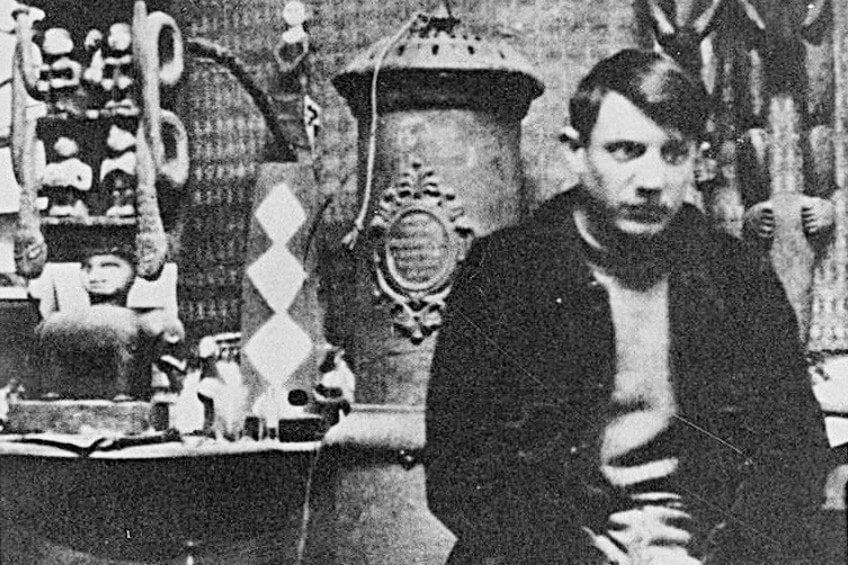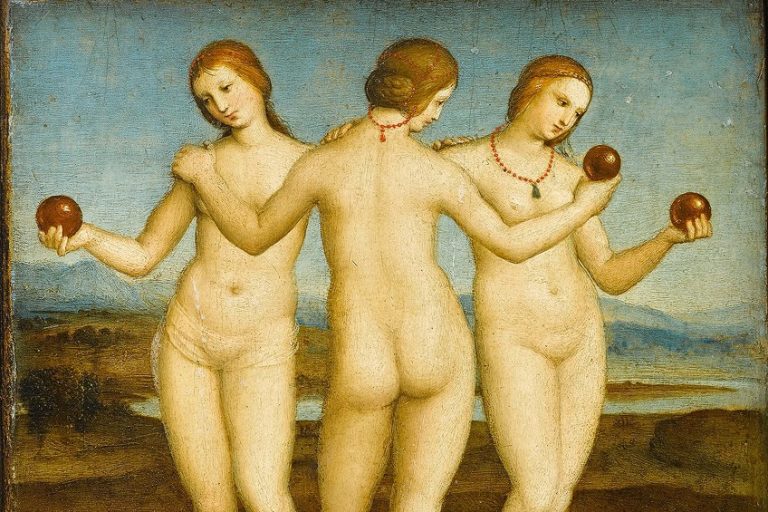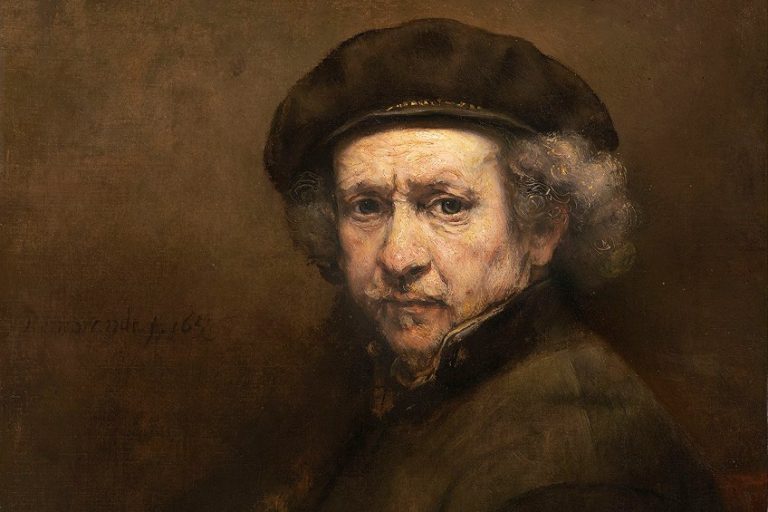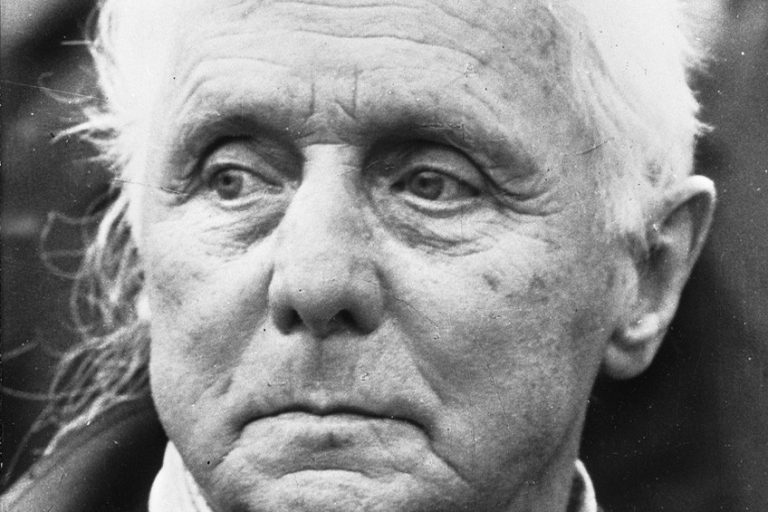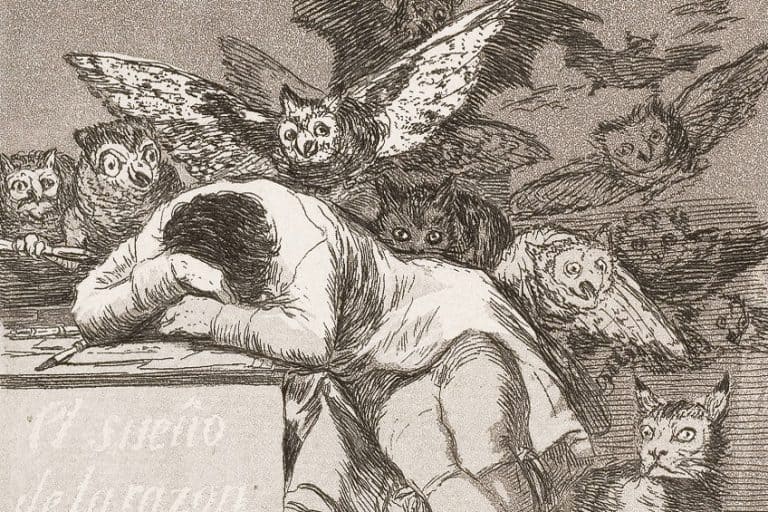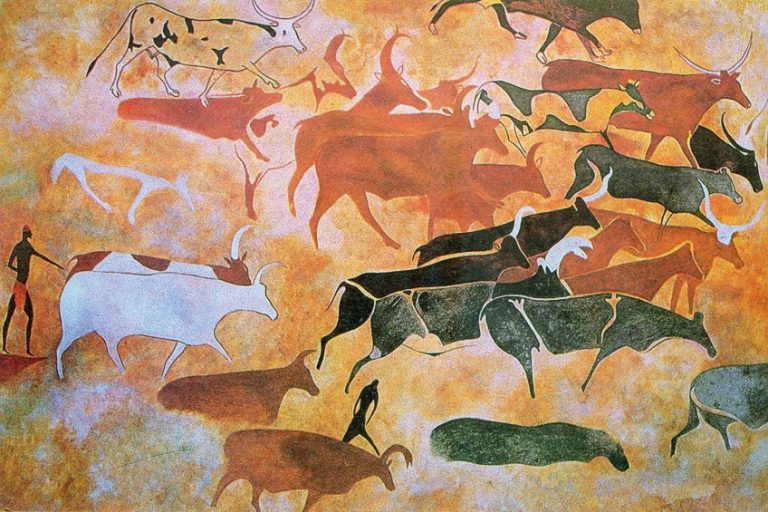Picasso Self-Portraits – A Lifetime of Visual Self-Reflection
The beloved Cubist Pablo Picasso created thousands of paintings, but did you know that he painted over 10 self-portraits from the young age of 15 up until just before his death? In this article, we will discuss 10 examples from the Picasso self-portrait evolution.
Artist Abstract: Who Was Pablo Picasso?
Pablo Ruiz Picasso was born on October 25, 1881, and died on April 8, 1973; he was born in Málaga in Andalusia, Spain. He learned art (drawing and painting) from a young age under the instruction of his father Don José Ruiz y Blasco who was also a painter. He was also a student at the Real Academia de Bellas Artes de San Fernando in Madrid.
His art has been characterized by several styles he worked in, also called periods, namely his Blue Period, Rose Period, African and Primitive art period, Cubism, Neoclassicism, and Surrealism.
Picasso’s style has shifted from realism to abstracted depictions with subject matter ranging from portraits to collages and sculptures. He was a multifaceted artist among artists and always evolved his perspective, which informed his artworks.
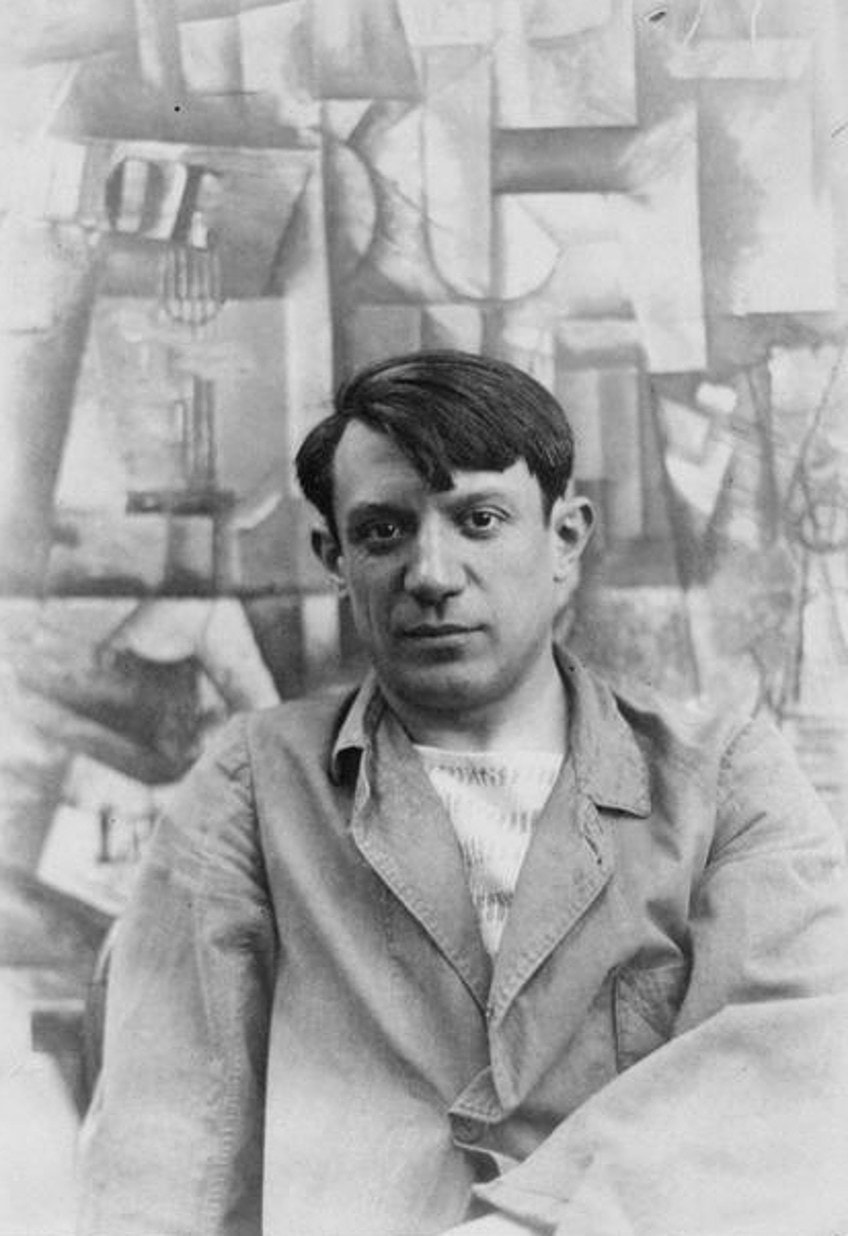
Pablo Picasso’s Self-Portrait Evolution
Below we look at 10 examples from the Pablo Picasso self-portrait evolution. From the earliest self-portrait painting during his teenage years to Picasso’s last self-portrait. Each rendition has its unique style because of how he evolved throughout his art career as a person and artist.
For each portrait of Pablo Picasso listed below, we will provide a brief socio-historical description as well as look at some of the formal art qualities.
We will provide the visual answers to the question, “What did Picasso look like”? It is important to note that for some of the renditions, the medium, dimensions, location, and worth may be uncertain due to limited information available.
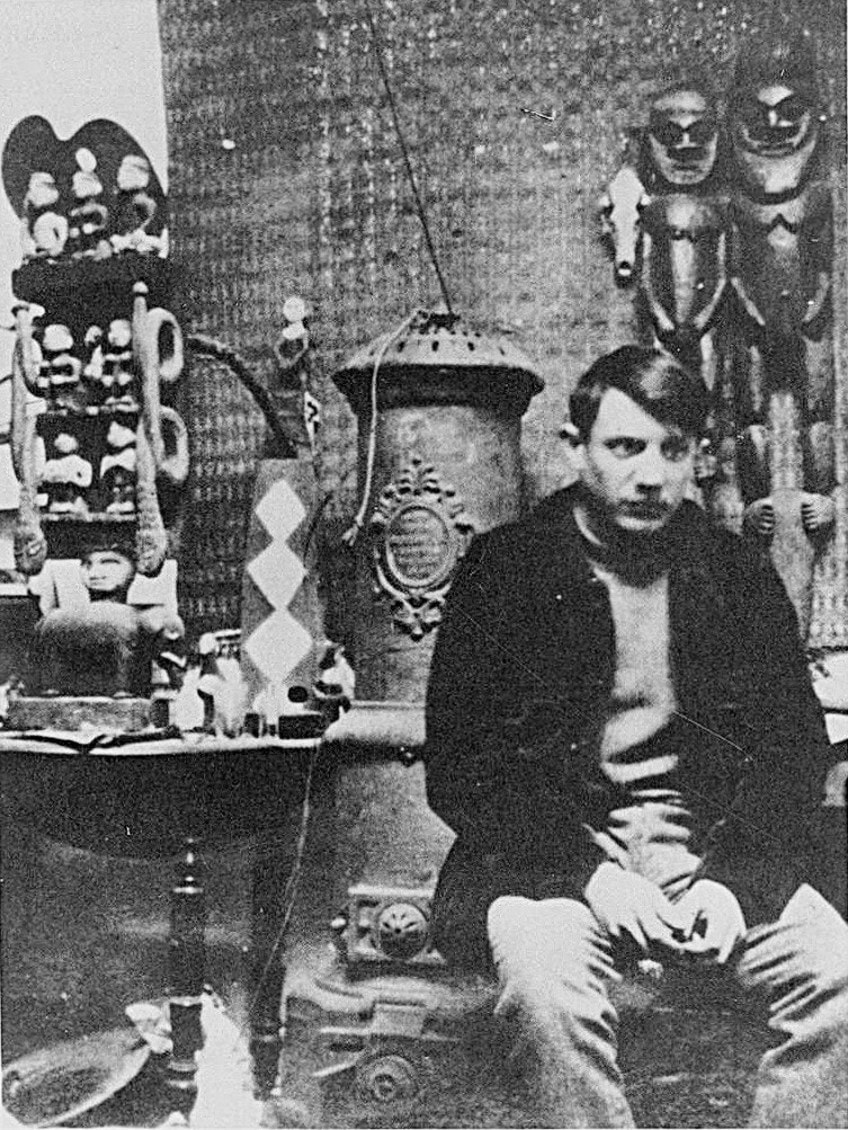
Self-Portrait (1896)
| Artist | Pablo Ruiz Picasso |
| Date Painted | 1896 |
| Medium | Oil on canvas |
| Genre | Portraiture |
| Period / Movement | Realism |
| Dimensions (cm) | 32.9 x 23.5 |
| Series / Versions | Part of Pablo Picasso’s self-portraits |
| Where Is It Housed? | Museu Picasso, Barcelona, Spain |
| What It Is Worth | N/A |
Self-Portrait from 1896 was one of Pablo Picasso’s earliest portraits of himself; he was around 15 years old. This was during the time when he lived in Barcelona with his family and attended the La Llotja School of Fine Arts.
His style was described as “academic Realism” at the time.
In this painting, he appears more serious in his facial expression, and he is staring directly at us, the viewers. He is wearing well-fitted garments, described as an “artist’s smock”, and his hair is short with a fringe. There appears to be a light source on the right side of his face (our left).
Self-Portrait (c. 1900)
| Artist | Pablo Ruiz Picasso |
| Date Painted | c. 1900 |
| Medium | Charcoal and white crayon on paper |
| Genre | Portraiture |
| Period / Movement | Realism |
| Dimensions (cm) | 22.5 x 16.5 |
| Series / Versions | Part of Pablo Picasso’s self-portraits |
| Where Is It Housed? | Museu Picasso, Barcelona, Spain |
| What It Is Worth | Uncertain |
Pablo Picasso’s Self-Portrait from around 1899 to 1900 depicted him when he was around 18/19 years old. This was during a time when his painting style started shifting from Realism to Modernism, and he joined a group of other artists and writers who would meet at the Els Quatre Gats (in Catalan it means “The Four Cats”) café in Barcelona.
This group of artists was notably avant-garde and influenced by the French art nouveau style and Symbolism.
Some notable artists who influenced his work during this time were Comte Toulouse-Lautrec and Edvard Munch. Picasso also traveled to Paris in 1900 where he also lived for several months. While in Paris he was influenced by the stylistic trends of Post-Impressionists like Vincent van Gogh and Paul Gauguin.
Yo, Picasso (1901)
| Artist | Pablo Ruiz Picasso |
| Date Painted | 1901 |
| Medium | Oil on canvas |
| Genre | Portraiture |
| Period / Movement | Blue Period |
| Dimensions (cm) | 73.5 x 60.5 |
| Series / Versions | Part of Pablo Picasso’s self-portraits |
| Where Is It Housed? | Private Collection |
| What It Is Worth | Sold for $47.9 million at Sotheby’s in 1989 |
Yo, Picasso, or I, Picasso in English, was painted in 1901 when he was around 19/20 years old. He was traveling to and living in Paris from Spain during this time. He has been described as appearing considerably confident in this rendition of himself, in the spirit of showing himself to the world. It was also part of his significant exhibition at Ambroise Vollard’s art gallery in 1901.
This portrait of Pablo Picasso consists of oranges, yellows, and whites, as well as darker hues of blue, composing the background, all of which create a stark radiance.
There is an expressive application of brushstrokes that creates a dynamism, but this is further heightened by Picasso who is also looking directly at us, the viewers; he is sitting in profile with his head turned towards us displaying that surety. This was also the year when his Blue Period started, which was characterized by the dominance of blue colors, solemn and despairful moods, and subject matter that consisted of destitute people like prostitutes and derelicts.
Picasso was also affected by the suicide of his good friend Carles Casagemas, who shot himself in the same year.
Self-Portrait with Palette (1906)
| Artist | Pablo Ruiz Picasso |
| Date Painted | 1906 |
| Medium | Oil on canvas |
| Genre | Portraiture |
| Period / Movement | The Rose Period/African Period/Primitivism |
| Dimensions (cm) | 91.9 x 73.3 |
| Series / Versions | Part of Pablo Picasso’s self-portraits |
| Where Is It Housed? | Philadelphia Museum of Art, Pennsylvania, the United States of America |
| What It Is Worth | Uncertain |
Self-Portrait with Palette was done when Picasso was around 25 years old, and he was living in Paris, where he permanently moved in 1904. This was also during a time when he started shifting styles, from his Rose Period (c. 1904 – 1906), and explored African art, notably African masks and Iberian sculptures, as well as the artistic styles from Spanish cultures.
In this portrait of Pablo Picasso, his facial features are stylized, a close resemblance to Iberian sculptures.
His eyes are more oval (also described as “almond”), and his elongated eyebrows further accentuate these oval features. He is holding a palette in his left hand (our right) and his gaze is fixed ahead of him instead of his direct gaze from prior self-portraits. This composition has also been believed to complement his famous Portrait of Gertrude Stein (c. 1905 – 1906) in which the mask-like facial features with “almond” eyes are evident.
Additionally, similarities in the facial features have been drawn to his later Cubist works, often described as “angular”.
Self-Portrait (1907)
| Artist | Pablo Ruiz Picasso |
| Date Painted | 1907 |
| Medium | Oil on canvas |
| Genre | Portraiture |
| Period / Movement | African Period/Primitivism |
| Dimensions (cm) | 56 (H) x 46 (W) |
| Series / Versions | Part of Pablo Picasso’s self-portraits |
| Where Is It Housed? | National Gallery Prague, Czech Republic, |
| What It Is Worth | Uncertain |
Self-Portrait from 1907 is even more stylized than the above-mentioned and here we see the influence of Iberian sculptures and the more angular facial features. For example, the almond-shaped eyes and the elongated nose that is also triangular. Picasso also utilizes thicker, black, outlines on his face and white clothing, which creates more angular contrasts.
His brushstrokes are also expressively and somewhat “haphazardly” applied, and there is a geometric-like pattern on his jacket.
We are reminded of Pablo Picasso’s other famous artwork Les Demoiselles d’Avignon (1907), housed at the Museum of Modern Art (MoMA) in New York City. Here he also depicted his figures with sharp angularity and mask-like features.
He also collected various sculptures and masks.
This is also like a Pablo Picasso Cubism self-portrait due to the stylistic qualities as mentioned above. Interestingly there were two branches of Cubism, namely Analytical and Synthetic Cubism. Subject matter became fragmented and overlapped, qualities we will find in some of his later self-portraits too.
Self-Portrait (1938)
| Artist | Pablo Ruiz Picasso |
| Date Painted | 1938 |
| Medium | Charcoal on paper |
| Genre | Portraiture |
| Period / Movement | Surrealism |
| Dimensions (cm) | 130 x 94 |
| Series / Versions | Part of Pablo Picasso’s self-portraits |
| Where Is It Housed? | The Picasso Museum, Paris, France |
| What It Is Worth | Uncertain |
Self-Portrait (sometimes also titled Autoportrait) from 1938 depicts a 57-year-old Picasso, but here, we see him in an almost Surrealistic abstraction as a biomorphic figuration in the act of painting; he is holding his palette and standing in front of his easel with a paintbrush in his left hand.
His large almond-shaped eyes and nose are almost superimposed, and his upper body appears cylindrical.
Picasso explored the Surrealist art style during the 1920 and early 1930s, and we will see the distortion of faces and figures evident in some of his other paintings too like his masterful Guernica (1937), which is housed in the Museo Nacional Centro de Arte Reina Sofía in Madrid, Spain.
Seated Man Self-Portrait (1965)
| Artist | Pablo Ruiz Picasso |
| Date Painted | 1965 |
| Medium | Oil on canvas |
| Genre | Portraiture |
| Period / Movement | Pablo Picasso’s later period |
| Dimensions (cm) | Uncertain |
| Series / Versions | Part of Pablo Picasso’s self-portraits |
| Where Is It Housed? | Uncertain |
| What It Is Worth | Uncertain |
In Seated man Self-Portrait from 1965, Pablo Picasso was around 83/84 years old. Here, he is depicted sitting on a chair looking up towards us, the viewers. His large hands are placed in a relaxed manner on the tops of his upper legs.
This painting is abstract and has a child-like quality in its rendering.
The dominant colors are green, blue, and red, as well as whites and beiges, with what appears to be some yellow patches on the white background. The brushstrokes are loose and fluid and seemingly hastily applied in different lengths and sizes.
Self-Portrait (1966)
| Artist | Pablo Ruiz Picasso |
| Date Painted | 1966 |
| Medium | Uncertain |
| Genre | Portraiture |
| Period / Movement | Pablo Picasso’s later period |
| Dimensions (cm) | Uncertain |
| Series / Versions | Part of Pablo Picasso’s self-portraits |
| Where Is It Housed? | Uncertain |
| What It Is Worth | Uncertain |
In this Pablo Picasso self-portrait from 1966, the artist was around 85 years old. Here, he is also seated but he utilized no colors and mainly shading and texturing through lines and patterns. He also incorporated his own shadow, which appears behind but is also seemingly a part of his figure.
We clearly see the play between positive and negative space, emphasized by his utilization of one medium.
This rendering is also highly stylized as his figure has the characteristic Cubism angularity, which we could question as being a Picasso Cubism self-portrait as well as a combination of his other stylistic influences, which are hinted at in his posture. His body is facing us, the viewers, but his head is turned to his right (our left), almost resembling the type of rigidity from African, Egyptian, and Iberian art.
Self-Portrait (1971)
| Artist | Pablo Ruiz Picasso |
| Date Painted | 1971 |
| Medium | Uncertain |
| Genre | Portraiture |
| Period / Movement | Pablo Picasso’s later period |
| Dimensions (cm) | Uncertain |
| Series / Versions | Part of Pablo Picasso’s self-portraits |
| Where Is It Housed? | Uncertain |
| What It Is Worth | Uncertain |
In this Pablo Picasso self-portrait from 1971, he was around 89/90 years old and nearing the end of his fruitful career and life. Here, he depicts himself in thick, loose, and fluid brushstrokes, creating movement and dynamism, in his characteristic abstraction and mask-like facial features reminiscent again of his African period. The colors are more neutral in this portrait of Pablo Picasso, depicting whites, grays, black, and hints of green. The background is a similar color to his figure, which creates an almost shallow space.
There is some depth created by Picasso’s application of thick and dark outlines, which stand out against the lighter background.
Self-Portrait: Facing Death (June 30, 1972)
| Artist | Pablo Ruiz Picasso |
| Date Painted | 1972 |
| Medium | Crayon on paper |
| Genre | Portraiture |
| Period / Movement | Pablo Picasso’s final years |
| Dimensions (cm) | Uncertain |
| Series / Versions | Part of Pablo Picasso’s self-portraits |
| Where Is It Housed? | Uncertain |
| What It Is Worth | Uncertain |
Self-Portrait Facing Death was part of Pablo Picasso’s last self-portrait collection. He produced several other self-portraits, namely Self-Portrait (June 28, 1972), Self-Portrait (July 2, 1972), and Self-Portrait (July 3, 1972). He was around 90/91 years old when he created it with crayons on paper utilizing pinks and greens with what appears to be some brown and distinct black outlines.
He applied dots and a mishmash of lines to imply the texture of his beard and some stubble along his upper lip area. The artist’s eyes are depicted wide and looking straight at us, the viewers. His appearance also resembles that of an older man, somewhat frail, accentuated by his small and bony shoulders, which are contrasted by his large head that is out of proportion.
An important aspect of how Picasso portrayed himself is evident in his gaze, he appears to be frightened, and undoubtedly of his oncoming death. Some sources suggest he faced his own mortality and his “superstitions” about death were made visual.
The Enduring Pablo Picasso
The Pablo Picasso self-portrait evolution is a visual story of his life and art career. It shows us his development as a man and his fluid and interactive relationship with his medium and art style, from Realism to Surrealism, ancient to modern.
Picasso reportedly painted until the day he died, but even though he is no longer with us, his life endures through his art. In this article, we have only explored 10 Picasso self-portrait examples, but we encourage you to find him in all his other iterations. We leave you with a few of his wise words: “I paint objects as I think them, not as I see them”.
Take a look at our self-portraits by Picasso webstory here!
Frequently Asked Questions
How Many Pablo Picasso Self-Portraits Are There?
Pablo Picasso reportedly created around 14 self-portraits in different media, from oil painting, drawing, and crayons. He started when he was around 15 years old in 1896 up until when he was around 90 years old in 1972.
What Did Picasso Look Like?
Pablo Picasso created many faces of himself throughout his self-portrait evolution, from realistic depictions as a young man, to abstracted and angular depictions in his adulthood as well as when he was in his old age. Picasso’s last self-portrait was a drawing depicting an abstracted, almost amorphous face and almond-shaped eyes, wholly unrecognizable as Pablo Picasso, but probably more recognizable as his essence, and how he saw himself.
What Was Pablo Picasso’s Art Style?
Pablo Picasso was one of the pioneering artists of the Cubism art movement during the early 1900s. Still, he was influenced by various other art styles like Realism, Neoclassicism, Surrealism, Symbolism, African and Primitive art, as well as modalities like sculpture, drawing, printmaking, and ceramics.
Alicia du Plessis is a multidisciplinary writer. She completed her Bachelor of Arts degree, majoring in Art History and Classical Civilization, as well as two Honors, namely, in Art History and Education and Development, at the University of KwaZulu-Natal, South Africa. For her main Honors project in Art History, she explored perceptions of the San Bushmen’s identity and the concept of the “Other”. She has also looked at the use of photography in art and how it has been used to portray people’s lives.
Alicia’s other areas of interest in Art History include the process of writing about Art History and how to analyze paintings. Some of her favorite art movements include Impressionism and German Expressionism. She is yet to complete her Masters in Art History (she would like to do this abroad in Europe) having given it some time to first develop more professional experience with the interest to one day lecture it too.
Alicia has been working for artincontext.com since 2021 as an author and art history expert. She has specialized in painting analysis and is covering most of our painting analysis.
Learn more about Alicia du Plessis and the Art in Context Team.
Cite this Article
Alicia, du Plessis, “Picasso Self-Portraits – A Lifetime of Visual Self-Reflection.” Art in Context. September 12, 2022. URL: https://artincontext.org/picasso-self-portraits/
du Plessis, A. (2022, 12 September). Picasso Self-Portraits – A Lifetime of Visual Self-Reflection. Art in Context. https://artincontext.org/picasso-self-portraits/
du Plessis, Alicia. “Picasso Self-Portraits – A Lifetime of Visual Self-Reflection.” Art in Context, September 12, 2022. https://artincontext.org/picasso-self-portraits/.


